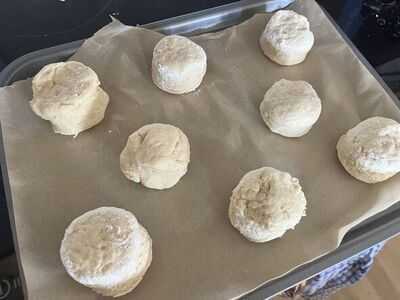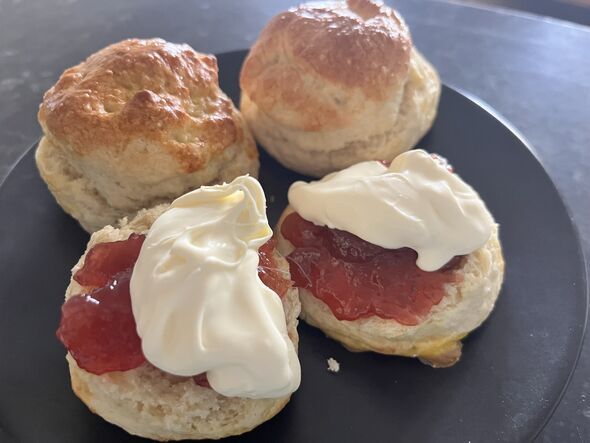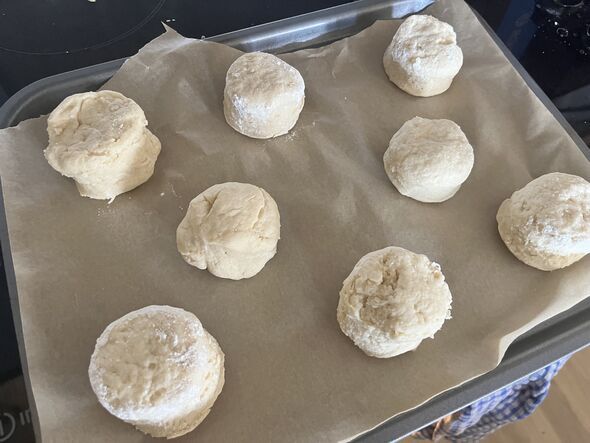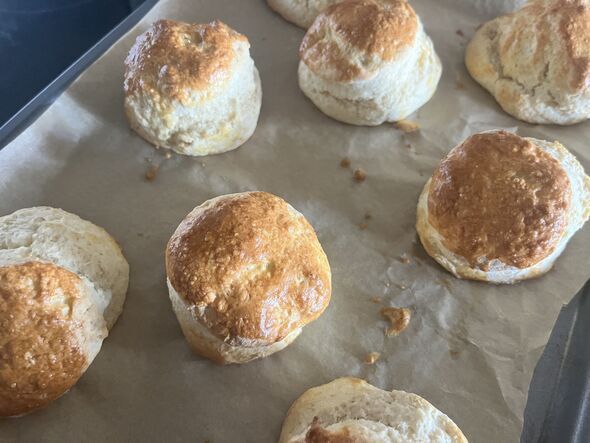

I've grown up with a mum that believes that one single day doesn't just celebrate , every day is. Yes, we'll still mark the occasion with cards, flowers, and maybe a little sweet treat, but Mum's firmly of the belief that the occasion isn't limited to one day in March.
Plus, this year she and my Dad are gallivanting abroad for a break. Instead, I'm taking you back to last year, where I marked the occasion with an afternoon tea fit for any foodie. Mine and my Mum's mutual love of is our own love language, so it's only fitting that the day should involve that.

As a keen home , a lot of the were from contestants, as well as some classic afternoon tea staples.
Afternoon tea wouldn't be complete without some classic scones topped with jam and clotted cream. Which one goes first? Jam then cream? Cream then jam? I'm firmly in Cornwall's camp.
What's great about scones is that they can be dressed up any way you want them to be; with fruit, without fruit, or even packed full of cheese. Last year I rustled up scones with sultanas and some delectable mature cheddar scones.
But since we're on a time crunch, I made scones just plain and simple with a recipe from. Don't mistake them for lacking in flavour.
These are the fluffiest scones you will ever eat, not tough and claggy. The scones are so good that they break in two without the need to take a knife to them, creating a perfect surface for lashings of jam and cream.
Another bonus to baking scones is how unadventurous the ingredients are, meaning you won't necessarily need a trip to the supermarkets to buy everything. You'll find all you need among fridge and store cupboard staples.
All the elbow grease takes between ten to twenty minutes, depending on how cold your hands are and your ability to rub butter into crumbs. Once you're over that hurdle, the rest is a piece of cake.
You should also make sure that you don't overheat the milk, just put it in the microwave on a low setting and work your way up from there if you need to. It should be warm, not hot.
Once the wet and dry ingredients are mixed together with a knife, I suggest bringing the rest together with your hands to form a dough. The dough may seem slightly wet, but Mary Berry also does her scone dough this way.
If you're still finding the dough slightly too wet, just sprinkle some more flour over it before shaping into the round. For a cleaner cut with the round cutter, I'd advise dipping the cutter in flour, just so the dough doesn't stick.
The recommended time is ten minutes for baking, but if the tops of your scones haven't got a lovely caramel shade of brown, simply add two minutes on at the end. Don't worry, this shouldn't overbake them.
These can be enjoyed warm (as I would recommend) or kept until they're completely cool. Honestly, it's all down to preference.
The scones require minimal effort but are a great bake to rustle up if you're looking for something to do last minute. Now you can enjoy! Jam then cream? Or cream then jam?
 Classic scones with jam & clotted cream
Classic scones with jam & clotted cream
Ingredients
Method
Heat the oven to 220C/200C fan/gas 7. Tip the self-raising flour into a large bowl with ¼ teaspoon of salt and the baking powder, then mix.
Add the butter, then rub in with your fingers until the mix looks like fine crumbs. Stir in the caster sugar.
Put the milk into a jug and heat in the microwave for about 30 seconds until warm, but not hot. Add the vanilla extract and a squeeze of lemon juice, then set aside for a moment.
Put a baking tray in the oven. Make a well in the dry mix, then add the liquid and combine it quickly with a cutlery knife - it will seem pretty wet at first.
Scatter some flour onto the work surface and tip the dough out. Dredge the dough and your hands with a little more flour, then fold the dough over two to three times until it's a little smoother.
Pat into a round about 4cm deep. Take a 5cm cutter (smooth-edged cutters tend to cut more cleanly, giving a better rise) and dip it into some flour. Plunge into the dough, then repeat until you have four scones. You may need to press what's left of the dough back into a round to cut out another four.
Brush the tops with a beaten egg, then carefully arrange on the hot baking tray. Bake for ten minutes until risen and golden on the top.
Eat just warm or cold on the day of baking, generously topped with jam and clotted cream. If freezing, freeze once cool. Defrost, then put in a low oven (about 160C/140C fan/gas 3) for a few minutes to refresh.